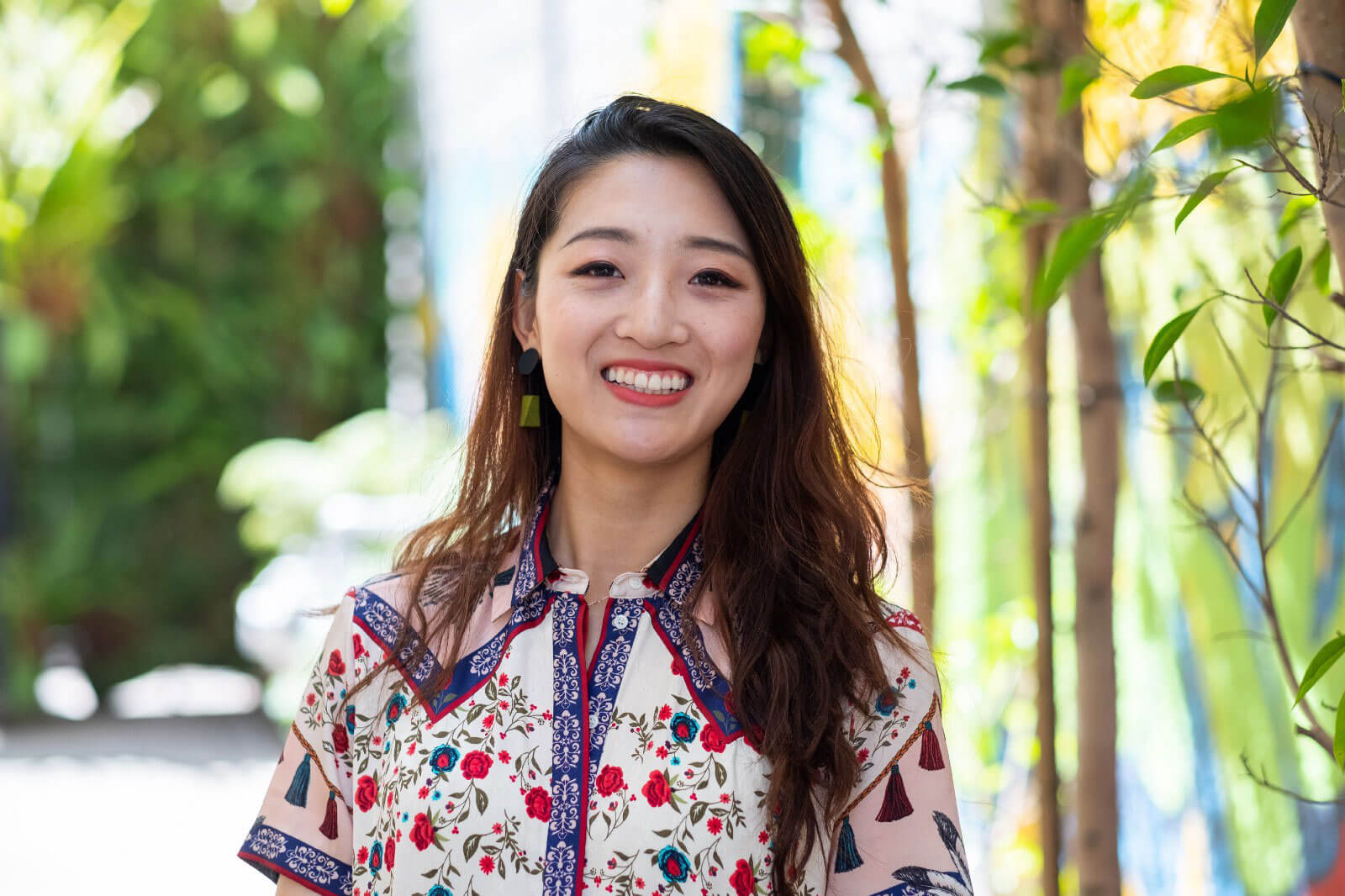
We recently invited the team at Job Portraits to visit our office and identify what makes our work culture unique. This is one of three posts they developed to help tell that story.
…
Verkada’s dynamic and inclusive startup environment, bolstered by a seasoned leadership team, exerted a strong pull on software engineer Grace Wang. She moved west from a midsize startup in Chicago to collaborate on Verkada’s all-in-one enterprise security cameras. Below, she discusses her role focusing on computer vision, why she finds Verkada’s Eng culture appealing, and what projects excite her most.
What’s your role at Verkada?
I’m one of about 25 software engineers here at Verkada, and I mainly focus on computer vision and the backend. I write code, design backend architecture, and develop our computer vision prototypes. I also communicate with different teams about product design and the best ways to convey data to the frontend.
What were you doing before Verkada, and what led to you join?
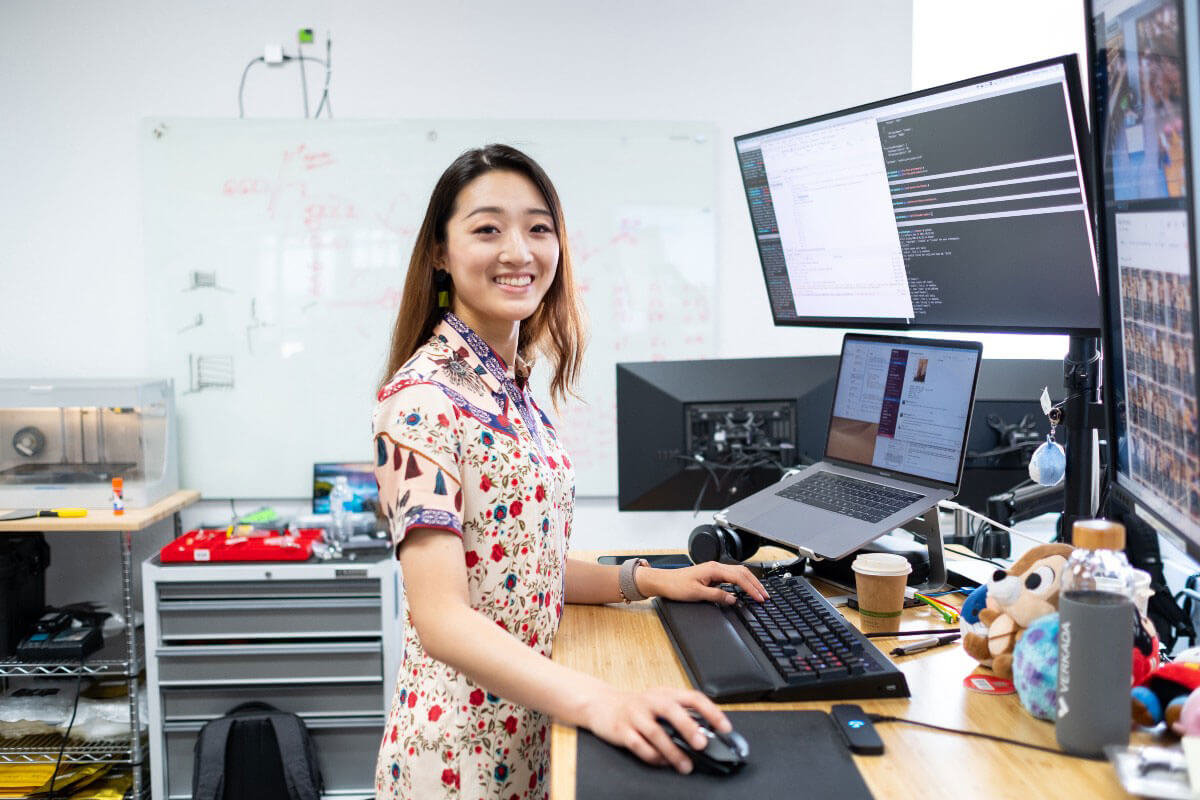 Grace at her desk. We have monitor envy.
Grace at her desk. We have monitor envy.
Before joining Verkada I was a backend software engineer in Chicago at a company called SMS Assist. It was a midrange startup, with around 800 employees. But unlike at Verkada where everything is brand-new, the product was already very mature. Here I have far more opportunity to own entire projects end-to-end.
When I flew out here to interview, there were only 12 people in the company at the time. The environment was really dynamic and exciting. But what impressed me most was the product. It was like nothing else out there — customers were hungry for it — and sales were going really well. The co-founders had valuable prior startup experience, and they were super smart, but not intimidating at all. When I interviewed with them it was like we were equals, thinking through questions and problem-solving.
“When I interviewed with the cofounders it was like we were equals, thinking through questions and problem-solving.”
I also felt good about the funding, which has been robust. At this point, we’ve already gone through both series A and B rounds, and I’ve seen our revenue grow ever since the series A round. So I feel secure about our future.
What’s an interesting challenge you’re working on right now?
At the moment, I’m working on a computer vision project called People Search that will allow our customers to zero in on human movement captured live by our cameras. Basically we want our cameras to be able to detect and focus on individuals and their actions in order to sense danger, identify violent behavior, and keep people safe. It’s a brand-new product with our very own solution to problems no one has really figured out before now. It’s inspiring to work with teammates who are building new and better advanced computer vision technologies to solve trending problems.
 Left: Grace collaborates with Rob Cromwell (standing, left, VP of Engineering). Right: Grace, Rob (seated, centre), and Arianna Fu (seated, right, UX Designer) brainstorm.
Left: Grace collaborates with Rob Cromwell (standing, left, VP of Engineering). Right: Grace, Rob (seated, centre), and Arianna Fu (seated, right, UX Designer) brainstorm.
What’s different about Engineering at Verkada compared to other places you’ve worked?
Each project is owned by the whole team, from prototyping to release. It’s so liberating to have the kind of freedom we do during the entire process—not only in how we work, but with the equipment we can use. On the computer vision side, we get to use the most advanced deep learning technologies, which is super exciting.
“It’s so liberating to have the kind of freedom we do during the entire development process, from prototyping to release .”
And because we’re a small team, I’m not confined to just working on one aspect of the product. For the People Search project, I’ve gotten to work on both the computer vision side of things and the backend, which has been very challenging but also rewarding. Benjamin, one of the co-founders, and I designed the architecture and did pair programming while trying to find a path to scale. That experience really helped me gain a deeper understanding of our entire coding structure.
There’s also a real diversity here in terms of how people think. Some people are more optimistic, others more cautious — we all have different perspectives. That mix brings a broader range of ideas to the table. I’ve learned how to think beyond my own viewpoint. And the entire org structure of Verkada is pretty flat, which means everyone on the team has the opportunity to grow in the direction they want.
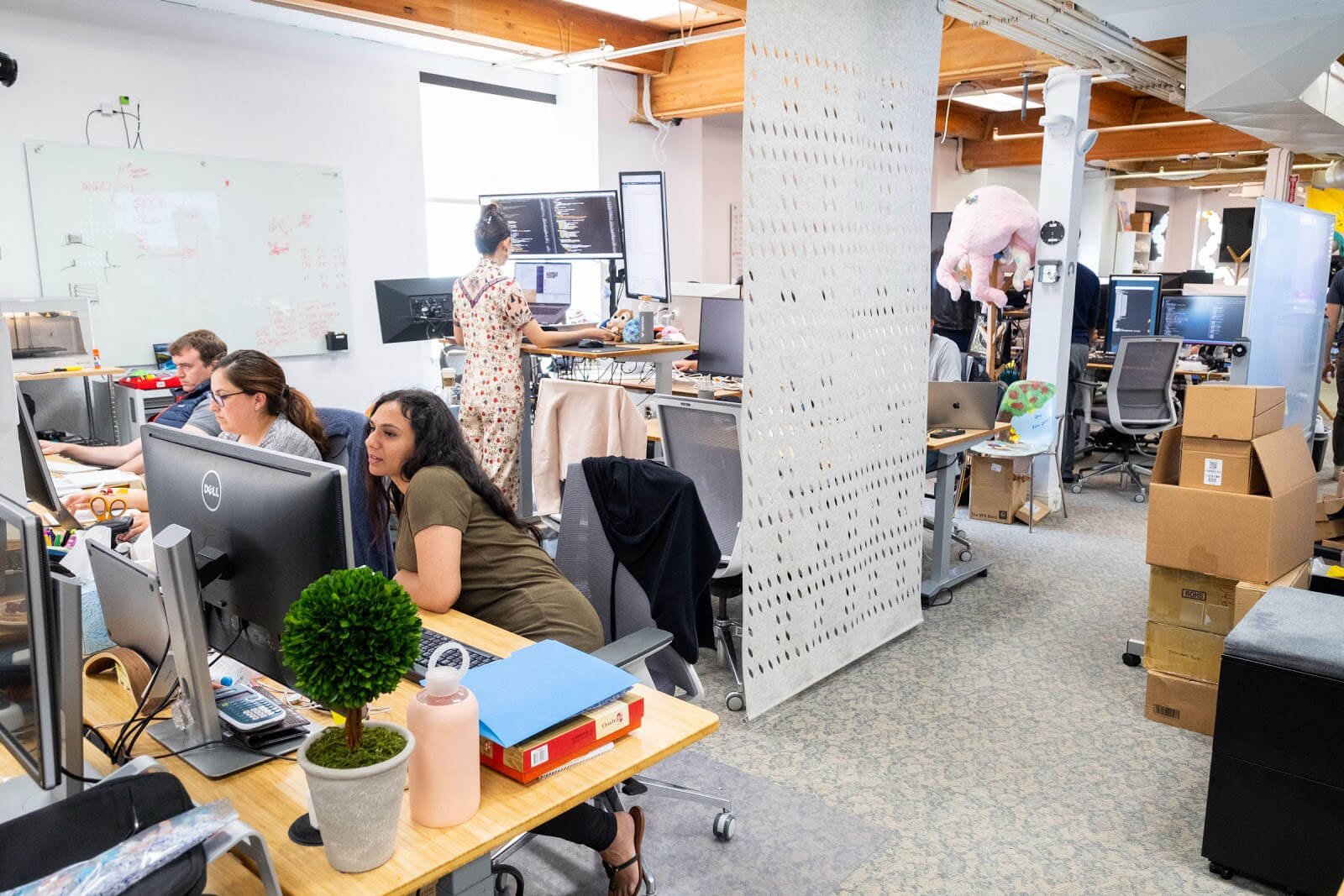 The Engineering team is growing fast and currently occupies a large portion of Verkada’s HQ in downtown San Mateo.
The Engineering team is growing fast and currently occupies a large portion of Verkada’s HQ in downtown San Mateo.
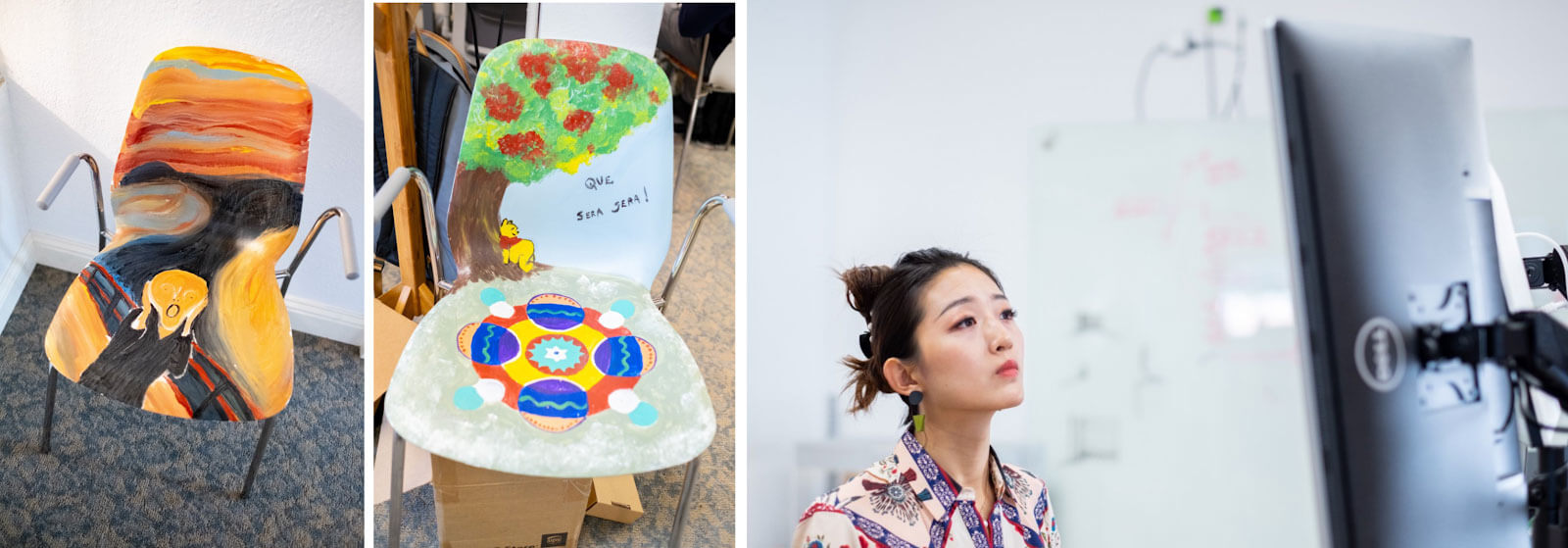 Left: Chairs painted by the Engineering team as part of a team-building exercise. “It’s so liberating to have the kind of freedom we do during the entire process—not only in how we work, but with the equipment we can use.”
Left: Chairs painted by the Engineering team as part of a team-building exercise. “It’s so liberating to have the kind of freedom we do during the entire process—not only in how we work, but with the equipment we can use.”
Tell us more about the Eng team culture.
It’s fast-paced and efficient, and very collaborative. We frequently meet, both in group and one-on-one settings, to share ideas and figure out initial steps. Everyone has a voice and everyone gets heard, no matter what team you’re on. Decision-making happens not just from the top down, but from the bottom up — it’s very freeing. And you don’t have to go through a whole bunch of layers to get permission to do things. Part of that comes down to flexibility and access. If you need to talk through a project with your co-worker or get a decision from someone, you can just walk over to their desk and talk it through.
“If you need to talk through a project with your co-worker or get a decision from someone, you can just walk over to their desk and talk it through.”
And teams keep communicating throughout the development process. For example, during a computer vision labeling UI project, I was constantly talking to our teammates to make sure everyone was on the same page. Was the engineer going the same direction that Product Design imagined? Did how we designed the products make sense? In general, if we run into problems, everyone sits down together to iterate, and we make revisions until we reach the right threshold. That’s how the product gets better and better.
What challenges does the company face, and what helps you get through those as a team?
I think one big challenge here is how to hire the right people and how to keep the team cohesive and connected no matter how much we expand. We want to retain that startup spirit. The company is growing fast, and we’re doing a lot of interviews, sometimes for several days out of a week. That affects time management, but it’s worth it to get the best hires. To keep the company connected, we do a lot of group outings: game nights, meals together, engineering outings, full-company gatherings, fun trips. You get to hang out more casually with your coworkers and hear what they’re working on. It feels like you’re with friends.
Interested in joining the Verkada team?
Check out open roles or email questions to [email protected]
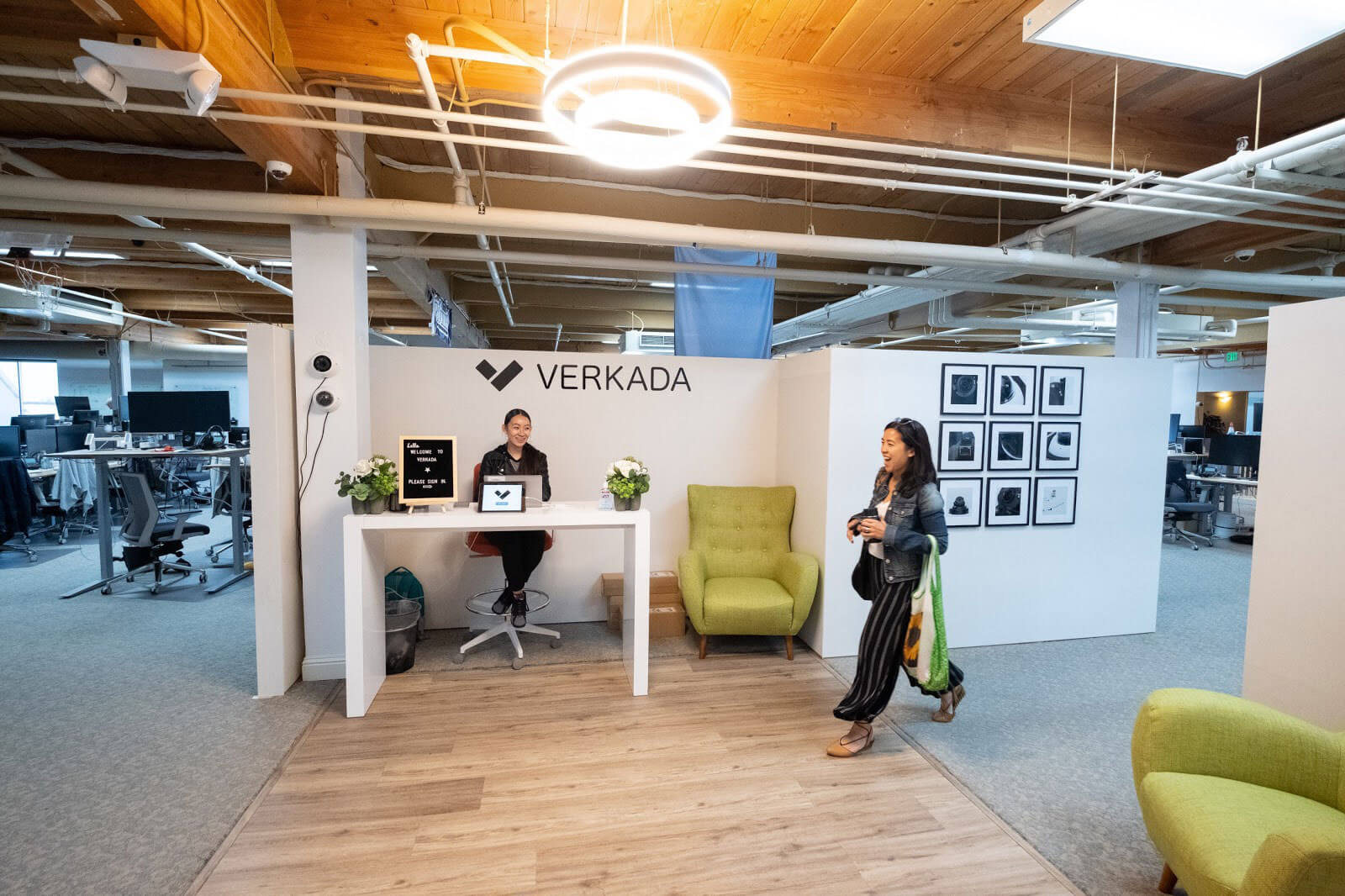 Your moment of Zen: Chelsie Liu (left, seated, Receptionist) and Stephanie Yee (right, walking, Marketing Creative Director) share a laugh as the day comes to a close.
Your moment of Zen: Chelsie Liu (left, seated, Receptionist) and Stephanie Yee (right, walking, Marketing Creative Director) share a laugh as the day comes to a close.


